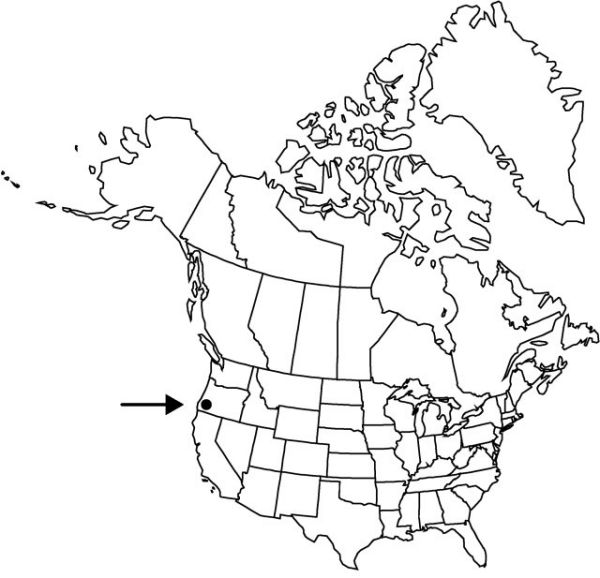Calochortus coxii
Phytologia 65: 216, fig.1g–k. 1988.
Stems usually not branching, straight to flexuous, often scapelike, 15–25 cm. Leaves: basal ± erect, to 3 dm × 3–7 mm; blade with adaxial surface densely hairy, abaxial surface glabrous, shiny. Inflorescences erect, 1–7-flowered; bracts 1–several, 2.5–3 cm. Flowers erect; perianth open, campanulate; sepals ovate-acuminate, 20 × 8 mm; petals white, with reddish striations from base to gland and broad lavender chevron just distal to gland margins, broadly obovate, 2.5 cm, adaxial surface densely hairy, margins slightly ciliate; glands transversely oblong-lunate, deeply depressed, green at adaxial base, 1/2 to nearly equaling petal claw width, surrounded by yellow hairs that grade to white at petal apex, covered with membranous scales, scales covered with very small, translucent, rodlike hairs; filaments 7 mm; anthers reddish-brown, 3–7 mm, apex apiculate. Capsules nodding, 3-winged, ellipsoid-elongate, 3–4 cm. Seeds light beige, surface rough.
Phenology: Flowering mid summer.
Habitat: North-facing open grassy slopes or woods, on serpentine
Elevation: 200–1000 m
Distribution

Oreg.
Discussion
Of conservation concern.
Calochortus coxii is endemic to Douglas County from near the Umpqua River to Myrtle Creek Mountain.
Selected References
None.
Lower Taxa
"dm" is not declared as a valid unit of measurement for this property."broad" is not a number."yellow" is not a number."broad" is not a number."thicker" is not a number.
